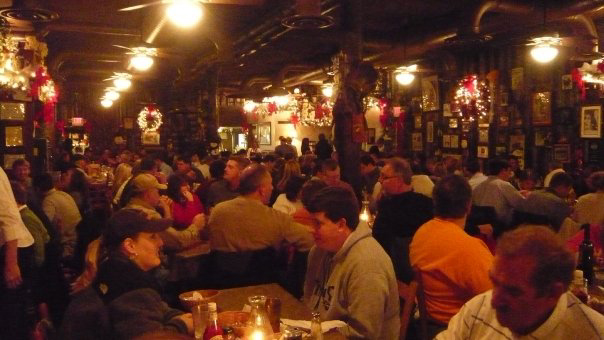Table Of Content

In the ever-evolving retail realm, shopping malls are vibrant consumer culture epicenters where commerce, entertainment, and community converge. Join us as we unravel the secrets behind captivating mall atmospheres, immersive experiences, and the symbiotic relationship between architectural brilliance and commercial triumph. It takes a keen eye for aesthetics, an understanding human behavior, and a deep commitment to creating a multi-sensory wonderland. By incorporating these must-have mall creation insights, architects, retailers, and enthusiasts can create thriving shopping malls that elevate the shopping experience and leave lasting impressions on visitors.
Overlapping concrete arches frame Bangkok shopping centre by Linehouse
Adaptable spaces for changing retail trends, emerging technologies, and shifting visitor preferences ensure that the mall remains relevant for years. New York’s Hudson Yards is designed with modular spaces that can transform based on needs. Incorporating play areas, child-friendly facilities, and even educational spaces like museums or workshops can turn shopping malls into a family haven.
On Zombies and The Immortality of the Shopping Mall
A neutral approach to design that is timeless and flexible creates a sustainable evolutionary path that resonates with consumers through authenticity. Incorporating cutting-edge technologies into mall design enhances convenience, facilitates personalized experiences, and attracts tech-savvy shoppers. By embracing technology, malls can stay ahead of the curve and provide a seamless shopping journey for visitors. The mall’s entrance should create a strong first impression and serve as a focal point that attracts visitors.
How to Design a Mall as an Architect: The Art of Designing a Mall

The Grove is situated near the Farmers Market and is designed as a traditional outdoor marketplace. It displays beautiful facades of the Art Deco style influenced by classic historic districts, with shopping alleys, broad walkways, huge public plazas, and intimate courtyards. The walkways are completely pedestrian-friendly and there are trolley rides available to cover the distance from the Grove to Farmers Market.
Future of the State Capitol Mall News fergusfallsjournal.com - Fergus Falls Daily Journal
Future of the State Capitol Mall News fergusfallsjournal.com.
Posted: Mon, 29 Jan 2024 08:00:00 GMT [source]
Craft a mall design that engages shoppers
Ensuring that the mall caters to all age groups and diverse interests will help in increasing the footfalls as well as increasing spends per person. The following are some points that need to be emphasized while designing a shopping mall. Developing a dedicated mobile app for the mall enables visitors to access store directories, promotions, and personalized recommendations. Indoor navigation systems integrated within the app guide users through the mall, enhancing convenience and reducing the chances of getting lost.
3 key factors to designing the mall of the future in 2023 - Building Design + Construction
3 key factors to designing the mall of the future in 2023.
Posted: Tue, 22 Aug 2023 07:00:00 GMT [source]
Thomas Heatherwick unveils 1,000 Trees shopping centre in Shanghai
Thorough research on the target market is crucial to identify the needs, preferences, and behaviors of potential shoppers. Analyzing demographic data, such as age, income levels, and consumer trends, helps in selecting a location that aligns with the target market’s characteristics and demands. Consumers want this high-tech integration, too — two-thirds of consumers say they’re interested in using AR to help them out while they shop. Download our free ebook today to discover how AR and other digital infrastructure tools can increase customer retention and maximize profits. All this, if approved, would be topped by a 30 acre public green space with a 3.8 mile trail network that runs through orchards, vineyards, an amphitheater and play areas. After adding text with the PDFelement AI pamphlet generator, press the “Add Image” button to insert images into the PDF template.
Unleashing the Artistry of Designer Custom Leather: A Masterpiece in Every Stitch
Engaging displays, creative window dressings, and pop-up shops transform shopping into an immersive experience. London’s Selfridges takes this to heart with its ever-changing, visually stunning window displays. The shopping mall experience has undergone significant change in the past few years, and after two... Next, access the “Language” drop-down menu to select the language in which you want your marketing content. Finally, choose the number of outputs and hit the “Generate” button to get an AI-generated brochure to market your product. Now, follow the on-screen instructions to fill in information about your brand and industry.
Emerging trends in shopping mall design standards
Tailored promotions, personalized recommendations, and exclusive offers make visitors feel valued and encourage repeat visits. The architectural design of a mall is not only about aesthetics but also about creating a distinctive identity and experience for visitors. Unique architectural features can set a mall apart from its competitors and leave a lasting impression on shoppers. Conducting extensive market research helps in identifying the target market’s preferences, aspirations, and shopping habits. Surveys, focus groups, and data analysis provide valuable insights into consumer behavior, enabling designers to create a mall that resonates with the target audience.
Simultaneously, technology has been implemented to optimize the parking experience. Many retail destinations feature license plate readers, which can give lost shoppers step-by-step directions back to their vehicles. The goal is to minimize any potential friction a customer may experience upon arrival and exit. Including green spaces, indoor gardens, or vertical gardens within the malladds a touch of nature and freshness to the shopping experience.
Attention to detail in amenities and facilities sets a mall apart and encourages visitors to return. Blurring the boundaries between indoor and outdoor spaces can create a refreshing and inviting atmosphere. Incorporating natural elements, such as green spaces, water features, or skylights, allows visitors to connect with nature while enjoying the comforts of an indoor shopping environment. Designing a mall that caters to the specific desires and preferences of the target market is crucial for its success. A deep understanding of the demographics and psychographics of the intended audience allows for effective customization and personalization of the mall’s offerings and experiences. Burwood Brickworks’s design utilizes a “biophilic” design, integrating numerous solar panels, gardens, and greenhouses to generate energy and process waste.
Though the first Walmart Supercenter didn’t open until 1988, big box stores have existed in some form since the 1960s, luring in shoppers with low prices and curbside loading lanes. For all the user psychology design that goes into them, the original designs of these buildings rarely pay much mind to their architectural or urban consequences, excluding a few notable exceptions. Expand your knowledge of shopping mall design and best practices with The Planner’s Guide to Mall Design.
Impressive multi-level central atriums featuring attractive plants, comfortable seating, and climate control were ideal social environments. The customer journey began upon arrival at the previously mentioned sea of parking. Parking was arranged to make establishing a visual connection to the building entrances easy. Once inside, static directories strategically placed throughout the mall apprised shoppers of the offerings and their locations.












